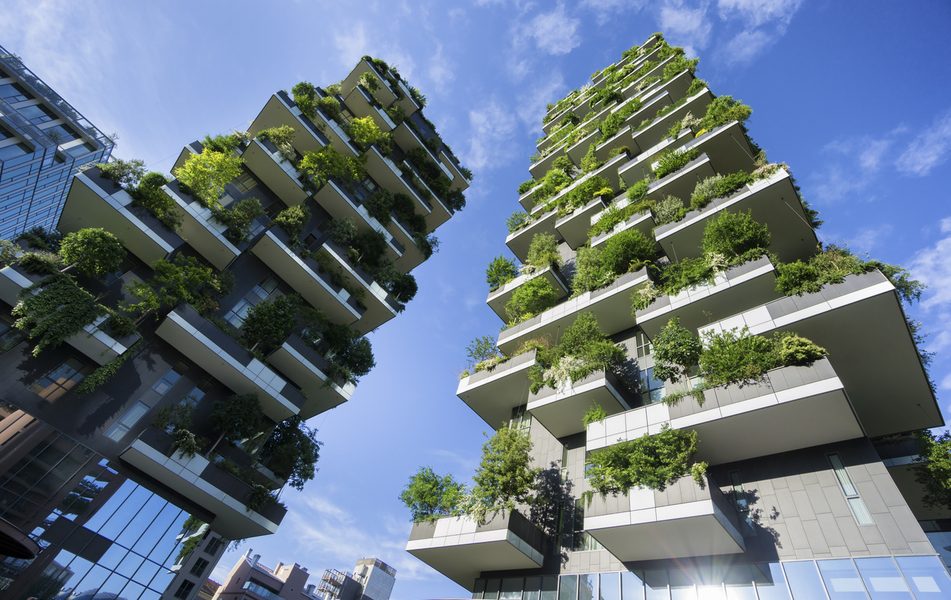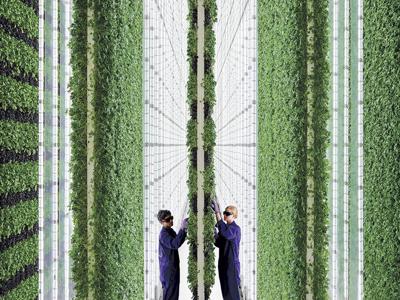Can Vertical Farms Feed the World?
Vertical farming is an amazing option to solve many of agriculture’s problems today, but it’s not a complete solution. Some crops simply won’t grow well in such a configuration, and there will always be a need for other growing methods.
That said, vertical farms can help feed the world by allowing growers to produce healthy, fresh foods in areas with little food production. They can offer ways for farmers to produce crops without worries over the effects of climate change since CEA systems allow for any climate the plants might need. And they can grow more food in less space, allowing us to continue to feed the growing population.
Nithi Siwaleerawilart-25-5/3
Nithi Siwaleerawilart-25-5/3
What is Vertical Farming?
Vertical farming is exactly what it sounds like: farming on vertical surfaces rather than traditional, horizontal agriculture. By using vertically stacked layers, farmers can produce much more food on the same amount of land (or even less).
Often these layers are integrated into buildings such as skyscrapers, housed in warehouses or shipping containers, greenhouses (like ours), or placed in spaces that would otherwise be unfit for farming.
Yet vertical farming is much more than just stacking plants and hoping for the best. The practice requires artificial temperature, light, water, and humidity control. If a delicate balance is not maintained, it’s possible to lose an entire crop the way a traditional farm might in the event of a drought or flood.

How Does Vertical Farming Work?
Vertical farming may answer many of agriculture’s challenges, such as providing us with more food on less land and doing so sustainably. But how do vertical farms work, exactly?
Several vertical agriculture models are available, from patio gardens built into old pallets to warehouses with stacked trays and greenhouses (like ours) that produce food for entire communities. Here are the details on how
Eden Green Technology’s hydroponic greenhouses work.
Our hydroponic vertical farming technology allows growers to cultivate crops in stacked plant spots within tower-like structures. These patented towers are hydroponic systems designed to produce the perfect micro-climate and enable farmers to grow their crops year-round.
The Benefits of Vertical Farming
Vertical farming has many benefits, with this model providing maximum output with minimal environmental impact and far less space required. With resources at a premium, it will become increasingly difficult to maintain food production using traditional methods.
Utilize Less Water & Space
With vertical farming techniques; farmers can use 98 percent less water and 99 percent less land. They can produce crop yields of 240 times that of traditional farms through year-round rolling or perpetual harvest. All of our produce is powered by the sun rather than LED lights, so these crops are not reliant on fossil fuels or other less ideal energy sources.
By 2050, around 80 percent of the world's population will live in urban areas. This population structure will mean a higher demand for food in the areas where land is the hardest to come by. In these large urban centers, vertical farming offers a way to meet this increased demand for food without the need for vast fields.
Nithi Siwaleerawilart M.5/3-25
Utilize Less Water & Space
With vertical farming techniques; farmers can use 98 percent less water and 99 percent less land. They can produce crop yields of 240 times that of traditional farms through year-round rolling or perpetual harvest. All of our produce is powered by the sun rather than LED lights, so these crops are not reliant on fossil fuels or other less ideal energy sources.
By 2050, around 80 percent of the world's population will live in urban areas. This population structure will mean a higher demand for food in the areas where land is the hardest to come by. In these large urban centers, vertical farming offers a way to meet this increased demand for food without the need for vast fields.
Increased Production All Year
Vertical farming also offers increased production overall and consistent year-round production. Gone are the days when some fruits and vegetables were only available seasonally. Instead, vertical farms can produce all sorts of crops year-round with little dependence on weather or climate.






